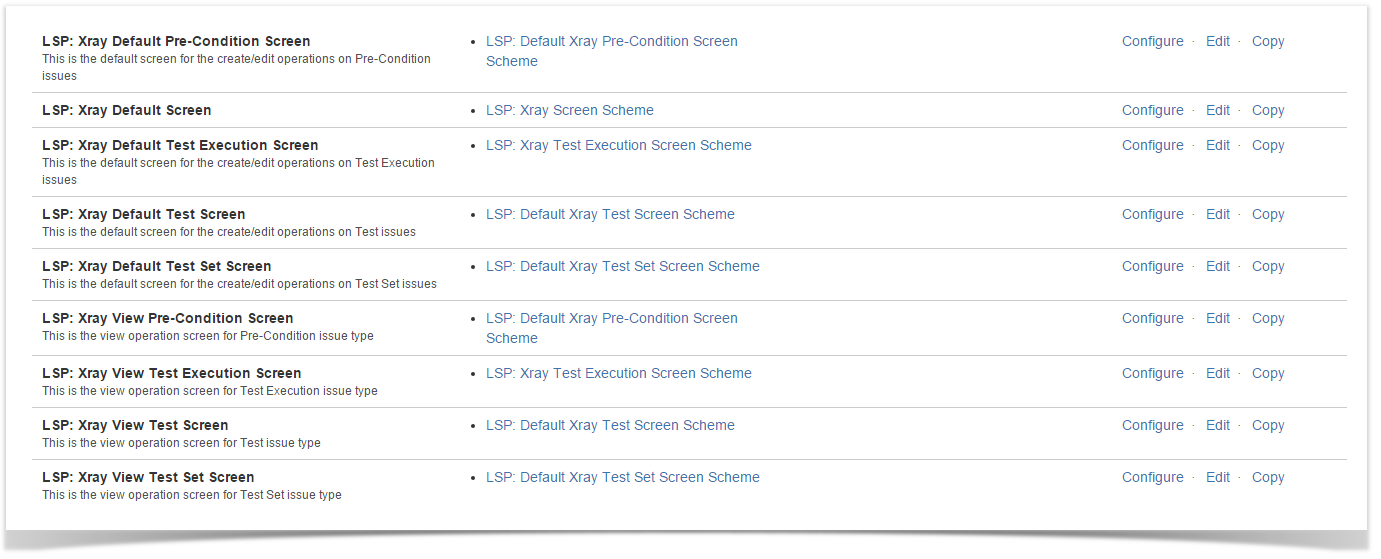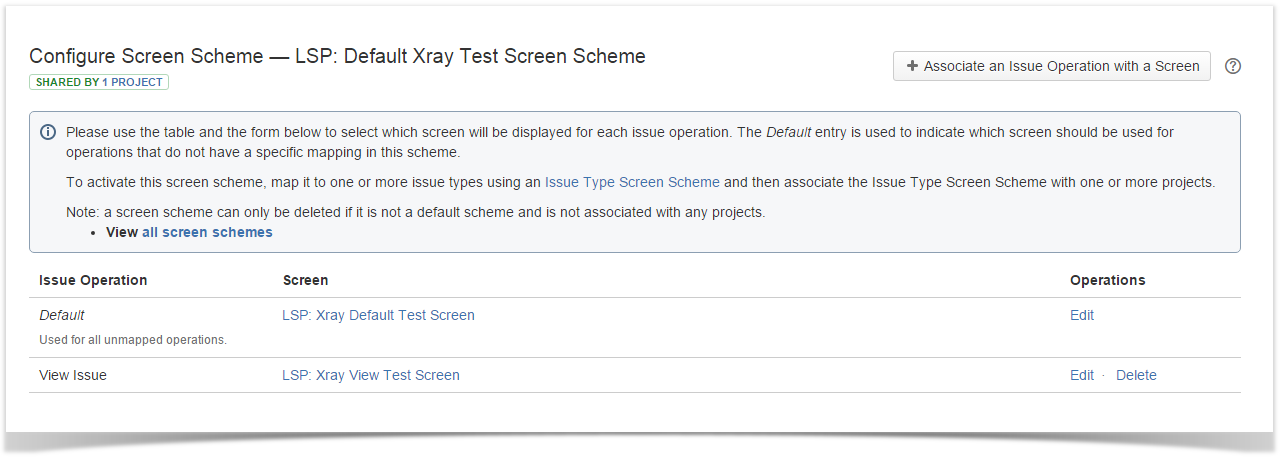Xray provides a built-in project template so all Xray Issue Types and Screens are associated to the newly created project. This way, each project can be customized without affecting other projects.
When you create a project based on an XRAY template, you are creating not only the project but also:
- Issue Type Scheme
- Screens
- Issue Screen Schemes
- Issue Type Screen Scheme
Creating the project
To create an Xray project, you must select the Xray Test Project in the Create Project Module. Then, you must read the short description and finally choose your project name and key.
Please note
As of v3.3, the project is created as being a "Business" based project.
You may want to change the project type to "Software" by going to Project settings > Details > Project Type, so that you can take advantage of some features such as Backlog management and visibility of active Sprint using the project side bar.
Issue Type Scheme created
This scheme uses all Issue Types from Default Issue Type Scheme and adds, if not already added, all Xray Issue Types.
Depending on the number of issues types your JIRA instance has, you may want to update the Issue Type Scheme to get rid of issue types that are not useful for your project.
Screens Created
Xray creates 9 project-specific Screens. Each Xray Issue Type has 2 screens (one for create/edit and one for viewing) and all other Issue types are mapped to the default screen.
Screen Schemes Created
Xray creates 5 project-specific Screens Schemes. Each Xray Issue Type has 1 screen scheme (configured with the 2 screens shown above) and all other Issue types are mapped to the default screen scheme.
Issue Type Screen Scheme
Xray creates a project-specific Issue type Screen Scheme (configured with the 5 screen schemes shown above).
By default, XRAY will map the XRAY Screen Scheme to all unmapped issues. This means that if you have an issue type like "Story" it no longer have the "Default SCRUM Screen Scheme" associated like when you use the "Scrum Software Development Template". You may want to change this!








